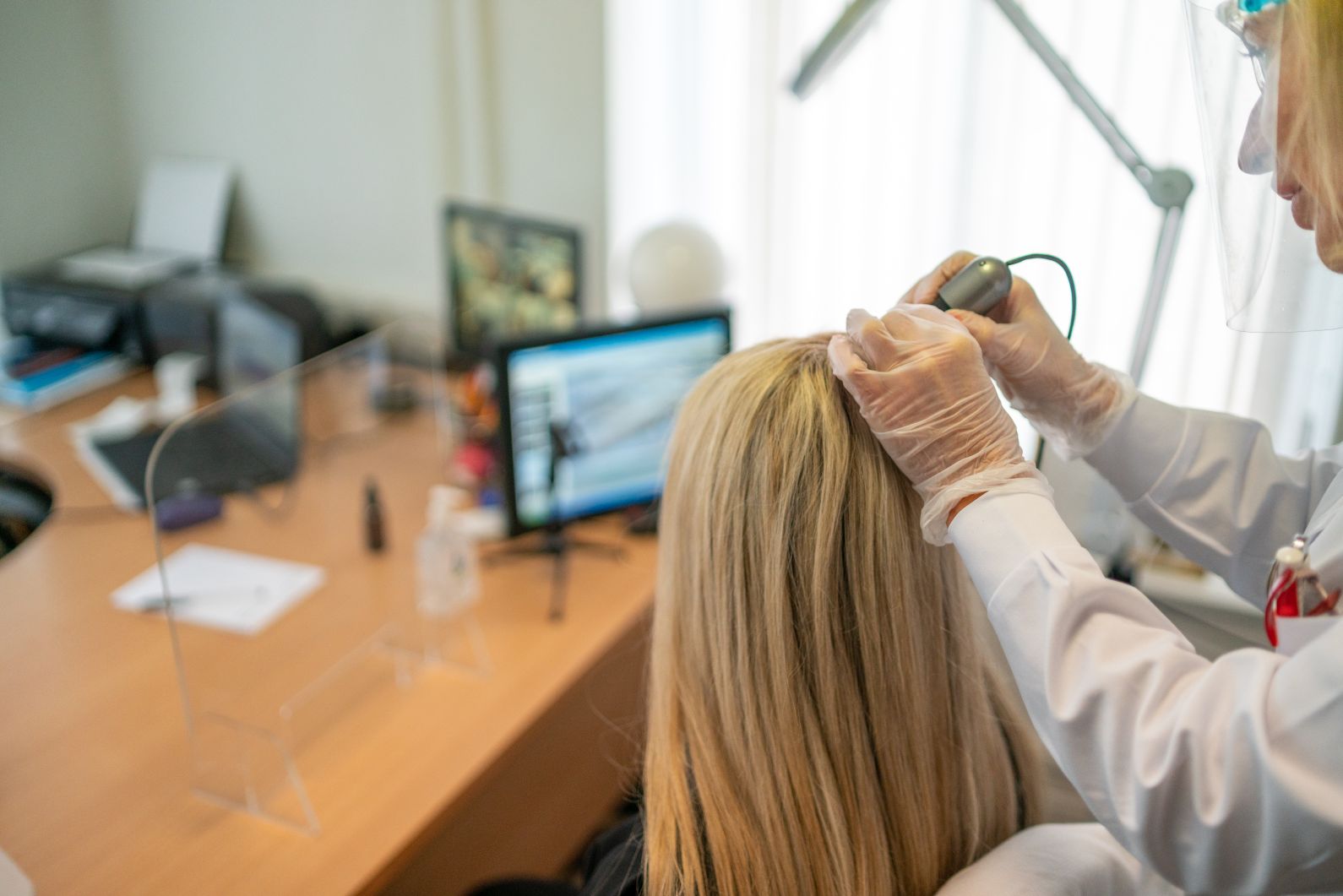Losing your hair can be a distressing experience. For many men, it’s a sign of ageing or a loss of virility. However, hair loss or alopecia can start much earlier than you might expect. Premature hair loss in men is a common problem affecting many worldwide. But what exactly is it and what can you do to prevent losing your hair early?
Premature hair loss refers to hair thinning or baldness that begins before you reach your mid-thirties. While it’s a common condition, it can significantly impact your self-esteem and confidence. Understanding the causes and taking proactive steps can help you manage and potentially prevent premature hair loss.
What Causes of Early Hair Loss in Men?
A combination of genetic, hormonal, and environmental factors contribute to premature hair loss. While it can be disheartening to learn that genetics play a significant role, understanding other potential causes can empower you to take control of your hair health.
Genetics is undoubtedly a major factor in hair loss. If your father or grandfather experienced premature hair loss, you’re more likely to follow a similar pattern. A specific type of hair loss called androgenetic alopecia, often referred to as male pattern baldness, is primarily hereditary. This condition is influenced by genes that interact with hormones, causing hair follicles to shrink over time. However, genetics is not the only culprit.
Hormonal imbalances, particularly elevated levels of dihydrotestosterone (DHT), can shrink hair follicles, leading to thinner and weaker hair. This hormone is a byproduct of testosterone and plays a crucial role in male pattern baldness.
Nutritional deficiencies can impact hair health. Vitamins and minerals like iron, zinc, biotin, and vitamin D are essential for hair growth. A diet lacking in these nutrients can weaken hair follicles and lead to hair loss. Additionally, conditions like anaemia, which often involves iron deficiency, can contribute to hair shedding.
Chronic stress can disrupt your body’s hormonal balance and trigger a condition called telogen effluvium, where a large number of hair follicles enter the resting phase prematurely. This can result in noticeable hair shedding a few months after a stressful event.
Medications used to treat various conditions, including high blood pressure, arthritis, depression, and cancer, can have hair loss as a side effect. These drugs can interfere with hair growth or cause hair follicles to miniaturize.
Underlying medical conditions such as thyroid disorders, scalp infections, and autoimmune diseases can also contribute to hair loss. These conditions often require specific medical treatment to address the underlying cause and potentially reverse hair loss.
It’s essential to note that hair loss can be complex, and multiple factors often contribute to the condition. If you’re concerned about hair loss, consulting with a healthcare professional can help determine the underlying cause and recommend appropriate treatment options.
What Are the Signs of Premature Hair Loss in Men?
Recognising the early signs of premature hair loss is essential for taking timely action. Before panicking at the sight of a few hairs on your pillow, it’s important to understand what a normal hair life cycle looks like compared to the early signs of hair loss. Normally, shedding between 50 to 100 hairs a day is perfectly normal. However, if you start noticing larger clumps of hair in your shower drain or a gradually receding hairline, these could be initial warnings of premature hair loss.
While the progression of hair loss varies from person to person, there are several common indicators to be aware of:
Thinning Hair: Often the first noticeable sign of premature hair loss, you might observe a decrease in hair density, especially on your crown or a widening hair part.
Receding Hairline: Another common symptom occurs when the hairline gradually moves upwards and backwards, forming an M-shaped pattern.
Bald Patches: In some cases, you may also notice bald patches on the scalp. These patches can be round or irregular in shape and vary in size.
Texture Changes: Changes in hair texture can be a subtle sign of premature hair loss. Your hair may become finer, failing to hold styles as easily as before.
Excessive Scalp Visibility: An increase in scalp visibility, particularly at the top of your head, can indicate thinning hair. Light penetrating more easily through the hair to the scalp is a tell-tale sign.
Hair Breakage: While not directly related to the hair loss from the scalp, an increase in hair breakage can make hair appear thinner overall.
Itchy or Flaky Scalp: Although not a direct indicator of hair loss, an itchy or flaky scalp can lead to conditions like dermatitis, which may contribute to hair thinning if left untreated.
Remember, the key to managing premature hair loss lies in early detection. Being aware of these signs and conducting a simple self-assessment, like noticing more hair fall during showering or brushing, can help you take proactive steps towards managing and potentially delaying further hair loss.
How to Prevent Premature Hair Loss in Men
While there’s no guaranteed way to prevent early onset hair loss in men entirely, adopting healthy habits and lifestyle changes can help you maintain your hair and potentially slow down the process.
A balanced diet rich in vitamins and minerals is crucial for hair health. Incorporate plenty of fruits, vegetables, lean proteins, and whole grains into your meals. Consider taking supplements if you have specific nutritional deficiencies.
Managing stress through relaxation techniques like meditation, yoga, or deep breathing exercises can also benefit your hair. Regular exercise not only improves overall health but also stimulates blood flow to the scalp, promoting hair growth.
Gentle hair care practices are essential for preventing hair damage. Avoid harsh shampoos and styling products that can irritate your scalp. Let your hair air dry whenever possible and be cautious when using heat styling tools.
Scalp massage can help improve blood circulation and stimulate hair follicles. Some people find it beneficial to use essential oils like rosemary or peppermint, which are believed to promote hair growth.
Many over-the-counter products formulated with ingredients known to support hair growth may assist in slowing down hair loss and encouraging new hair development. But as each person’s situation is unique and because possible contraindications exist, it’s imperative to seek guidance from a specialist before trying these products. They can help determine the most suitable options based on your specific needs and health profile. Prescription medications can also be effective in managing hair loss, but they come with potential side effects.
When to See a Hair Loss Specialist
If you’re experiencing significant hair loss or are concerned about the underlying causes, it’s essential to consult with a trichologist. They can accurately diagnose the type of hair loss you’re experiencing and recommend appropriate treatment options.
Additionally, if you notice rapid hair loss, accompanied by other symptoms like fatigue, weight loss, or skin changes, it’s crucial to seek medical attention as these could indicate an underlying health condition.
In conclusion, premature hair loss can be a challenging experience, but understanding the potential causes and taking proactive steps can help you manage and potentially prevent it. While genetics play a role, lifestyle factors such as diet, stress management, and hair care practices can significantly impact your hair health.
Remember, everyone’s hair loss journey is unique. What works for one person may not work for another. It’s essential to find what works best for you and be patient. With proper care and attention, you can maintain a healthy scalp and hair for years to come.
Experiencing excessive shedding or thinning hair? Don’t let it take a toll on your confidence! Our experts specialise in treating premature hair loss in men. Call us today on +353 (0)1 679 3618 to schedule an appointment with our trichologist.
Royalty-free image supplied from Pexels as part of the SEO service from 3R



